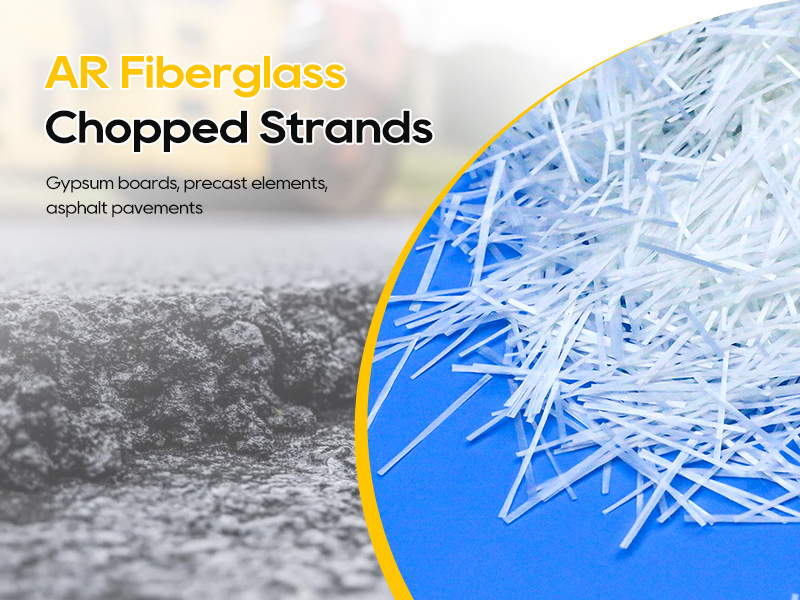
Introduce
Fiberglass Chopped Strands – This material sounds complicated, but it’s found in numerous products we encounter every day. From automobile structures to home building reinforcements, these chopped fibers play an important role. In this comprehensive exploration, we’ll uncover the mysteries behind fiberglass chopped strands, learn about their properties, manufacturing processes, and delve into the wide range of applications they serve.
Learn About Glass Fiber Chopped Strands
Essentially, fiberglass chopped strands are small, individual lengths of glass fibers, typically ranging from a few millimeters to several centimeters in length. These fiber bundles are made by cutting continuous fiberglass bundles into smaller pieces. But what makes these chopped shreds so special?
Key steps in manufacturing:
Raw material selection: Silica sand is used as the main component, supplemented by additives to enhance properties such as strength and durability.
Melting process: Raw materials are melted at high temperatures, often in excess of 1,000 degrees Celsius, to form a molten glass mixture.
Extrusion: Molten glass is extruded through fine holes to form continuous bundles of glass fibers.
Chopped: The continuous strand is then cut into smaller lengths using specialized machinery to form fiberglass chopped strands of the desired size.
Properties of glass fiber chopped strands:
Strength: Despite their small size, glass fiber chopped strands have excellent tensile strength, making them an excellent reinforcement for composite materials.
Flexibility: Chopped strands are flexible, allowing them to adapt to a variety of shapes and contours for complex applications.
Corrosion Resistance: Fiberglass strands are resistant to corrosion and degradation, ensuring longevity in harsh environments.
Lightweight: They are relatively lightweight compared to traditional materials such as steel, aluminum, and even solid glass.
Manufacturing process:The journey of chopped glass fiber begins with the selection of raw materials, primarily silica sand, which is melted at high temperatures along with other additives to enhance specific properties. The molten glass is then extruded through fine holes to form continuous glass strands. These strands are then cut into smaller lengths using specialized equipment, creating fiberglass chopped strands.
Strength and weight considerations:
The strength of fiberglass strands varies based on factors such as fiber composition, length and orientation. However, on average, the tensile strengths of these chopped strands range from hundreds to thousands of megapascals (MPa). This impressive strength makes them suitable for applications requiring strong reinforcement, such as automotive components, marine structures and industrial equipment.
In terms of weight, fiberglass chopped strands are relatively lightweight compared to traditional materials such as steel or aluminum. This lightweight property allows for the manufacture of strong yet lightweight components, thereby reducing overall vehicle weight and improving fuel efficiency in automotive applications.
Cross-industry Applications
The versatility of fiberglass chopped strands makes it suitable for countless applications in various industries. Let’s explore some of the key areas of using these chopped shreds:
Construction
In the construction industry, fiberglass chopped strands are commonly used as reinforcement in composite materials such as fiberglass-reinforced plastic (FRP) and fiber-reinforced concrete (FRC). They enhance the structural integrity of walls, beams, columns and other structural elements.
Automotive
Glass fiber chopped strands are widely used in the automotive sector to make lightweight components such as body panels, bumpers and interior trims. Their high strength-to-weight ratio helps reduce vehicle weight and improve fuel efficiency.
Marine
In marine applications, fiberglass shards are used to build hulls, decks, and other marine structures. Their corrosion resistance makes them ideal for use in marine environments.
Aerospace
In the aerospace industry, fiberglass chopped strands are used to make components for aircraft and spacecraft. Their lightweight nature and high strength make them suitable for applications where weight reduction is critical.
What Is The Difference Between
Chop Strand And Weave?
he primary difference between chop strand and weave lies in the orientation and arrangement of the fiberglass fibers within the composite material.
- Orientation: Glass fiber chopped strands have randomly oriented fibers, resulting in an isotropic structure. This means that the fibers are distributed in all directions, providing uniform strength and reinforcement throughout the composite material.
- Manufacturing: Chopped strand fiberglass is created by chopping continuous strands of glass fibers into smaller lengths. These chopped strands are then mixed with a resin matrix and molded into the desired shape.
- Properties: Due to its random orientation, chop strand fiberglass offers consistent mechanical properties in all directions, making it suitable for applications where uniform strength is required.
- Orientation: Woven fiberglass fabric features meticulously arranged fibers, usually in a crisscross pattern of warp and weft. This results in a directional structure, where the fibers are aligned along the length and width of the fabric.
- Manufacturing: Woven fiberglass fabric is produced by weaving continuous strands of glass fibers together using specialized looms. The weaving process creates a tight, structured fabric with distinct warp and weft fibers.
- Properties: The directional alignment of fibers in woven fiberglass fabric provides greater strength and stiffness along the length of the fabric. This makes it suitable for applications where load-bearing capabilities and directional strength are essential, such as in aerospace components or structural reinforcements.
In summary, chop strand fiberglass has randomly oriented fibers, offering uniform strength in all directions, while woven fiberglass fabric has meticulously arranged fibers, providing directional strength along the length and width of the fabric. Each type of fiberglass material has its own unique properties and applications, making them suitable for a wide range of industrial and commercial purposes.
Security Considerations
While fiberglass chopped strands offer many advantages, it is critical to follow safety precautions when handling them:
Personal Protective Equipment (PPE): Wear appropriate PPE including gloves, goggles, and respirator to prevent skin irritation and respiratory problems.
Proper ventilation: Work in a well-ventilated area or use an exhaust ventilation system to prevent the build-up of airborne particles.
Avoid Skin Contact: Minimize skin contact with chopped strands to prevent irritation or allergic reactions.
Cleanup: Clean up spills or debris promptly and dispose of waste materials properly to prevent contamination.
In Conclusion
In summary, glass fiber chopped strands are a versatile and resilient material with a wide range of applications in various industries. From construction and automotive to marine and aerospace, these chopped strands play a vital role in improving the performance and durability of composite materials. By understanding its properties, manufacturing processes and applications, we can continue to harness the potential of fiberglass chopped strands to enable innovation and advancement across industries.
As we explore the fiber frontier, let’s continue to explore new possibilities and push the limits of what fiberglass chopped strands can achieve. With the right knowledge and appropriate safety measures, we can unlock the full potential of this remarkable material and create a brighter, more sustainable future.





